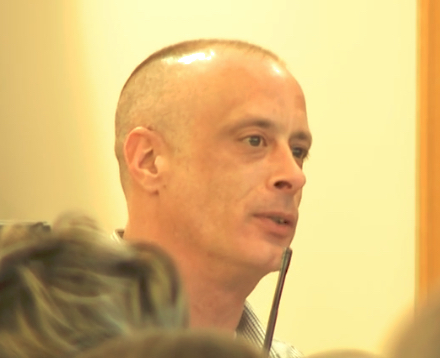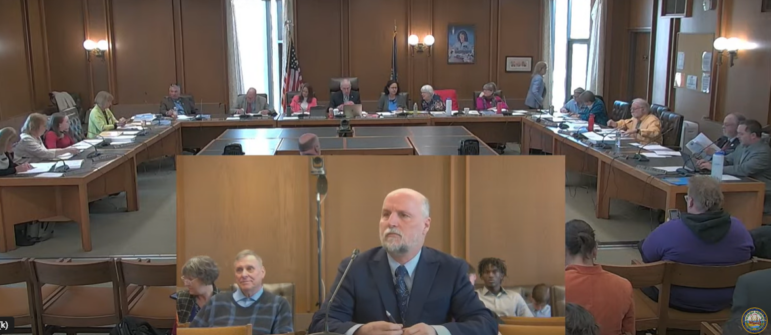By News release
Concord, NH – Today, the Governor’s School Safety Preparedness Taskforce presented Governor Sununu with their final report on safe schools, which comes after 90 days and more than 1,000 hours of research and discussion of the most pressing issues involving school safety and security.
This report will help serve as a model across the country for other states looking to strengthen school safety. The taskforce conducted an incredibly comprehensive review of the state, local, and federal landscape, sought and evaluated public comments, visited schools, met with school administrators, staff, students and parents, and held discussions with local fire, police and first responders.
The report identifies 59 taskforce recommendations, which will help the state of New Hampshire prioritize safety preparedness initiatives.
Practical recommendations
The taskforce was charged with providing practical, actionable recommendations from areas of agreement among taskforce members in order to provide state and local leaders, school administrators, students, parents, and first responders with the proper tools and recommendations to ensure New Hampshire schools are the safest in the nation.
“I could not be more proud of this comprehensive report. An incredible amount of work has been done in a very short amount of time,” said Governor Chris Sununu.
“This report is the single most important document this state has ever produced surrounding school safety. Although some of the recommendations will take some time, there are several actions already underway including developing the tools our local school districts need to succeed and putting timelines in place for my commissioners to complete recommendations contained in this report.”
“One of the most important recommendations contained in this report is the need to expand social and emotional learning (SEL). Many schools have SEL programs in place, but these programs may not be robust enough to be effective in these challenging times.
Programs have emerged that can be a tool for prevention not only for violence, but for addiction, suicide, and the toxic anxiety that has plagued our school children for too long,” continued Sununu.
“I’ve had the honor of working with Scarlett Lewis, who is the mother of Jesse Lewis, victim of the Sandy Hook elementary school shooting. She is a national leader in social emotional learning and creator of the Choose Love movement. As a state, New Hampshire will provide a backbone of support through Scarlett‘s program to introduce social emotional learning curriculum.
“Schools will certainly retain their autonomy to use programs that they are familiar with and have success with but we want to ensure that every student and school has the opportunity to benefit from proven SEL curriculum. Like all good programs the research can only take us so far. We need our amazing teachers and administrators to galvanize behind the concept of social emotional learning so that New Hampshire can be a leader in prevention services for our kids.”
Homeland security
Homeland Security and Emergency Management Director Perry Plummer and Chair of the School Safety Taskforce stated, “A study from John Hopkins University indicates that students that feel safe in their school have as much as an 18% increase in academic performance over kids that do not feel safe at school. I am proud to represent a state that was already ahead of most of the nation when it comes to school safety and still invested $30 million dollars to make our schools even safer, however, I was never prouder than when the Governor called for more action and put the Taskforce together and am extremely grateful to the hundred individuals that dedicated their time to this effort.”
Ken Norton, Executive Director of NAMI said, “NAMI NH is very pleased with the report and its recommendations, particularly the emphasis placed on addressing school climate, social and emotional development and mental health which have the potential to increase the safety, well-being and learning environment of all students. Many different stakeholders participated and offered input to the task force. Director Plummer and NH’s Homeland Security Dept did a great job assisting the task force in merging diverse opinions into the consensus recommendations contained in this report.”
Tiffany Eddy, a parent from Dunbarton said, “I commend Governor Sununu on his leadership for taking the proactive step of assembling this taskforce. We worked collaboratively and with the intention of ensuring that all New Hampshire children feel secure at school. As a mother of two school-aged children, I am proud of the recommendations set forth in this report and believe it will make a positive difference in empowering our schools and helping to keep our children safe.”
School board member
Michael Carney, School Board Member, Town of Salem said, “It was an honor and a pleasure serving on the Governor’s task force. It brought a diverse group of people with various backgrounds together to work collaboratively towards a singular goal of improving school safety. Egos were checked at the door and everyone’s opinions were valued. This report provides actionable recommendations that will help make New Hampshire schools safer. Hopefully, this report will also make people ask more questions about school safety. It was not intended to be the final solution on school safety but rather to continue the crucial conversation.”
Sugar Hill Fire Chief Allan Clark said of the report, “I am pleased that Governor Sununu recognized that the safety of our school children is the highest priority and by commissioning the Task Force for School Safety it brought leaders from many disciplines together to develop a plan to address this crisis. Although the recommendations contained in the report will not prevent all school tragedies, they will make a meaningful difference in the safety of our children.”
Commitment
The state is committed to providing as much assistance to schools as possible in implementing some of the 59 concrete recommendations put forward by the taskforce. While the assistance will come in a number of ways, below are a few examples:
- A 24 hour anonymous tip line for students, teachers and parents
- A one stop resource center for schools
- A school based “See Something Say Something” campaign
- Expanding Mental Health Resources
The State will work with schools to develop “Best Practice” documents, technical assistance or “Tool Kits” in a number of areas including but not limited to:
- Development of a Threat Assessment Team
- Emergency Communications
- Alerting
- Table Top Exercises
- Parent Notifications
- Reunification following a crisis
- Security Measures
The State will work with school and first responders to develop training programs that are:
- High quality and an appropriate amount of time
- Designed to fit into the existing school “workshop day” format
- Easily accessible
- We will have trainers available and conduct train-the-trainers so schools can teach their own personnel where desired. Some examples of these programs include but not limited to:
o Enhanced Social and Emotional Learning
o Raising the awareness and reducing the stigma of mental illness
o Recognition of signs that help is needed
o Crisis Management Training
o Emergency Operations Plan Training
o Incident Command training for school administrators
o Expanding Suicide Prevention Programs
The State will work with the first responder community to provide:
- Preplan response templates that can be adapted to their agency and school
- Increase high stress training for our School Resource Officers
- Increase “Warn Zone” EMS training
The School Safety Taskforce was comprised of a diverse group of Granite Staters representing: First responders, Police Chiefs, Fire Chiefs, SWAT Officers, school administrators, principals, teachers, School Resource Officers, parents, School Board Members, citizens, members of the National Guard, mental health professionals, homeland security officials, emergency management directors, intelligence professionals, communication professionals, and private businesses.
Note: A copy of the report is attached.





